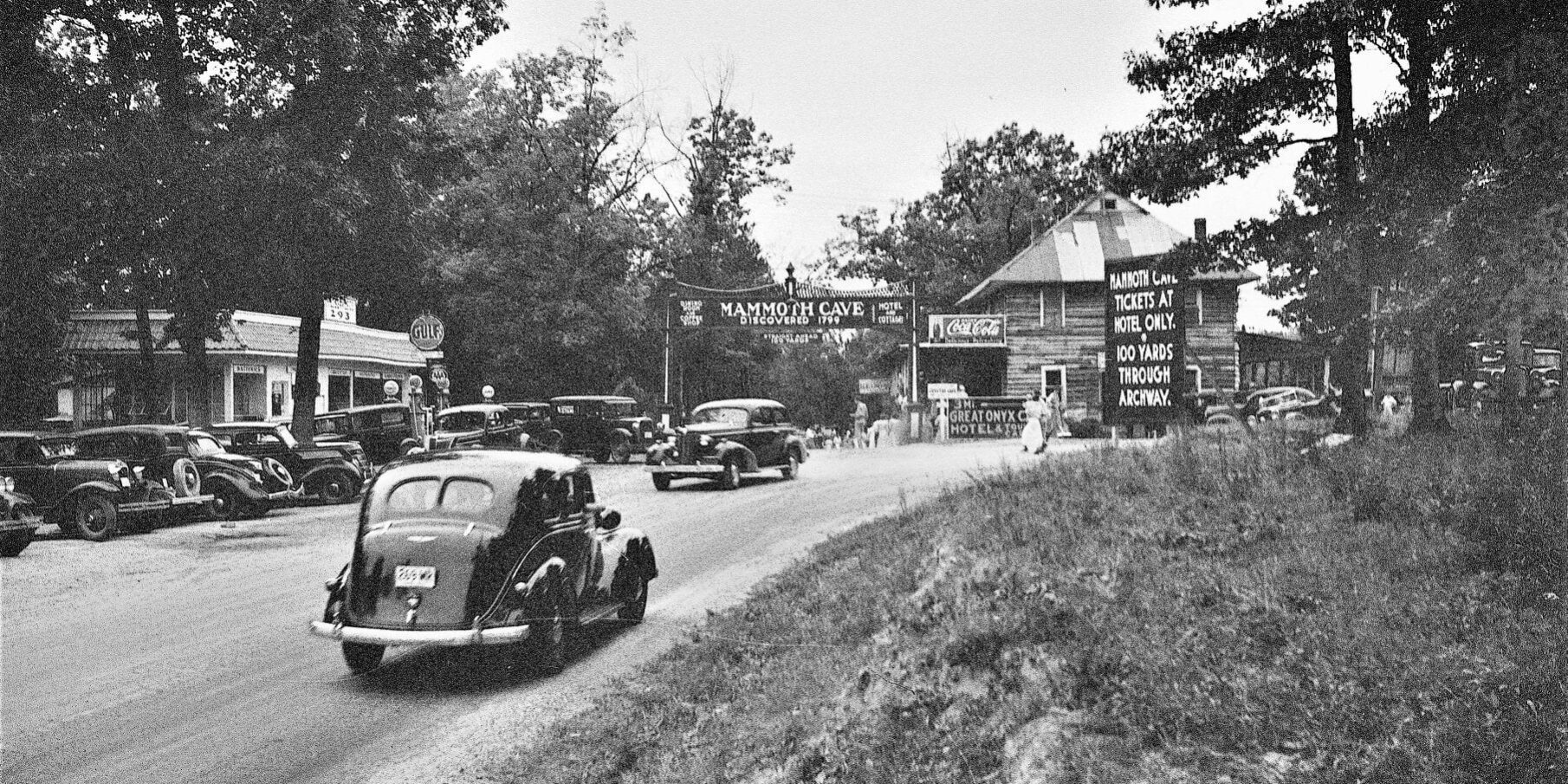
Richmond Rest-Over
When Mammoth Cave National Park was established in 1941, Great Onyx Cave, three miles from the entrance to Mammoth Cave, was not included, its owners continuing to operate the show cave in competition with Mammoth.
This circa 1940 postcard shows the commercial activity clustered at the gateway to Mammoth Cave with signs encouraging tourists to continue three miles farther to Great Onyx Cave, and counter signs warning that Mammoth Cave tickets can only be acquired at the Mammoth Cave Hotel “100 yards through archway.”

Relying on Mammoth Cave tourists, Great Onyx Cave attempted to affiliate itself with Mammoth Cave as much as possible while retaining its independence. This 1947 postcard folder is emblematic, defining Great Onyx Cave as “within the boundary of Mammoth Cave National Park.” The Great Onyx Cave brochure map shows the same, suggesting Great Onyx Cave is part of Mammoth Cave National Park. It would not be acquired by the park until 1961.

At the height of the early 20th century Kentucky Cave Wars, locals scoured the hills for a back way into Mammoth Cave from land not owned by the Mammoth Cave Corporation. Edmund Turner was one of these local cavers, contracting with landowner L.P. Edwards to search his property for a cave with the promise of splitting the profits. Turner found Great Onyx Cave in 1915 and died shortly thereafter, prompting L. P. Edwards to claim that he discovered the cave and was entitled to all the profits.

Great Onyx Cave had its own hotel, depicted in a 1920 postcard with a photograph of the lobby illustrated in a 1930s brochure.

Cave hotels were a necessity when most tourists arrived by railroad. By the end of the 1920s, however, most tourists were arriving by automobile. Great Onyx Cave provided these motorists with a campground and modest tourist cottages.


